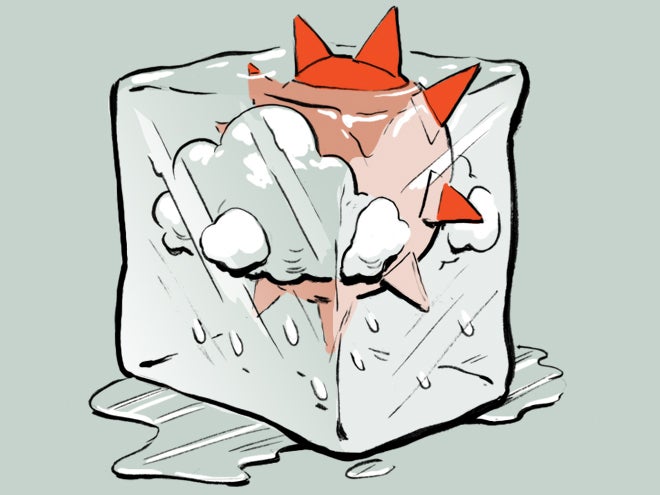What ice cores tell us about ancient storms
Digging up the particles trapped in layers of Arctic ice.

↑ Erich Osterberg, climate scientist at Dartmouth College
At the poles, snow doesn’t melt; it accumulates in layers of ice that stretch back in time like tree rings. I study particles trapped in these layers to see how climate has changed.
First, my team gathers ice cores from the coldest climes. In Greenland, we traverse thousands of miles on snowmobiles to reach different collection sites, surrounded by nothing but flat, white beauty. Then we drill for samples that range from a couple hundred feet to more than a mile long and date back up to 50,000 years.
Greenland cores preserve specks of dust from Chinese deserts and sea salt from big storms in the North Atlantic. But there are so few particles—some are one in a trillion—that it’s like trying to find a postage stamp somewhere in New York City. We melt a cross-section of ice and use a special instrument to count individual flecks.
These tell us what the climate used to be like. For example, winds had to be strong to carry larger dust motes thousands of miles. Little differences in the weights of oxygen and hydrogen in water molecules tell us about the temperature when they fell as snow thousands of years ago—and how that compares to rising temperatures today.
As told to Lexi Krupp
This article was originally published in the Fall 2018 Tiny issue of Popular Science.